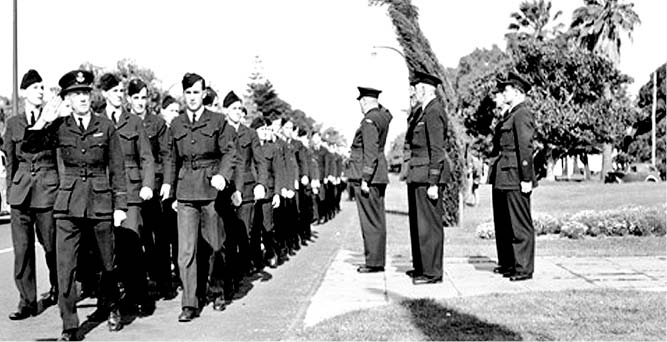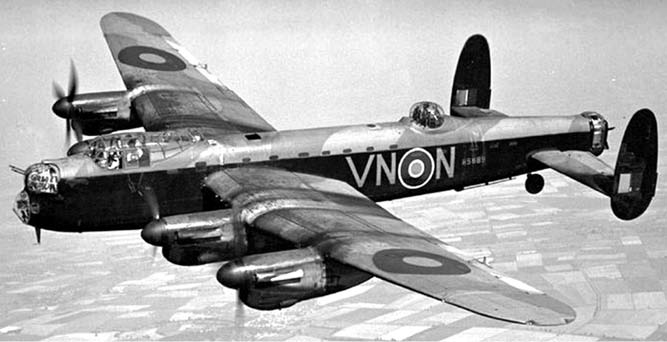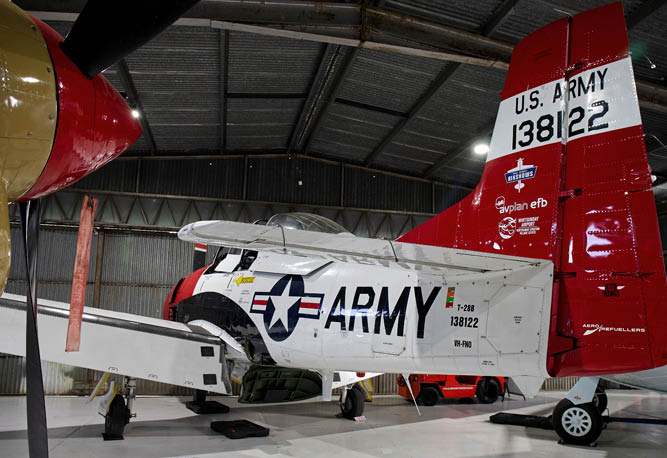In World War II, Flight Lieutenant Robert Coles Reitze received over 700 letters from air cadets that he had mentored in 76 Squadron, Air Training Corps, Fremantle. It was the ultimate accolade for his efforts in inspiring and preparing his cadets for service to their country. Bob Reitze was the personification of mentoring, and his cadets knew they would never be forgotten, even though they might be half a world away, braving flak and night fighters.
The word mentor is derived from the character ‘Mentor’ in Homer’s Odyssey. Mentoring means more than just educating. A good mentor also advises, supports and guides, encourages and inspires. When mentoring is combined with leadership and camaraderie, a powerful synergy is created.
This was certainly the case at 76 Squadron, and surely in ATC wings and squadrons all over Australia in WWII. Many of these squadrons benefited from the recruitment of WWI veterans, such as Wing Commander Charles Snook, who was appointed Officer Commanding 5 Wing, (now 7 Wing, Australian Air Force Cadets) Western Australia on 5 September 1941.
Charles William Snook was born in North Fremantle on 13 April 1891, and educated in High School, Perth; North Shore Grammar School, Sydney; and Hawkesbury College of Agriculture. While working as a car salesman, he took flying lessons, and at the age of 24, sailed to England, where he gained his aviator’s certificate at Hendon.
Charles then joined the Royal Flying Corps and was posted to No.5 Squadron, Brooklands. He was later promoted to Captain and in March 1916 he was sent to France, flying the B.E.2c. Then on 2 August he was tasked to bomb the Zeppelin sheds near Brussels. After successfully bombing the target, Charles was intercepted by two Fokkers, and shot down behind enemy lines. Amazingly, one of the Fokkers landed alongside, and the pilot strode over for a friendly chat. However, Charles soon found himself in Clausthal POW camp. A few months later a routine chest X-ray showed a spot on his lung, and the Red Cross arranged a prisoner exchange in March 1918. Fortunately, the spot turned out to be a photographic blemish.
Nevertheless, Charles was required to spend the rest of the war as a non-combatant. After demobilisation in 1919, Charles bought two aircraft, shipped them back to Melbourne, and formed the Australian Aircraft Company. Charles was soon forced to sell out, and took up farming in Brookton, WA. He returned to flying in 1928 and established Airlines (WA) Ltd in 1935, with a Spartan and Monospar aircraft and later bought a Stinson and a Dragon.
After Charles was appointed OC of 5 Wing ATC, he advertised for volunteer instructors and received over 140 applications, from which 44 were selected. On 7 October 1941, four squadrons were established, and on 23 October the first parades were held, with over 420 cadets attending.
Bob Reitze was selected as an instructor at 76 Squadron, Fremantle, and spoke of Charles Snook in glowing terms: ‘I remember that the Wing Commander came down that night. He gave the lads a real stirring address – and the Wing Commander can speak! He filled them with inspiration and ambition, he pointed to their obligations in the seriousness of the world position, and he mentally, if not literally put “Wings” on the breast of each lad there … I can honestly say that, to my mind No 5 Cadet Wing owed its existence and eventual success to his words that night. Even I felt inspired.’
While still managing his airline, Snook visited the regional squadrons, attended graduations, parades and presented awards. He also arranged for flights in RAAF aircraft, and took cadets flying in his Monospar or Stinson. Charles also taught cadets sailing on his yacht Timeru. With his enthusiasm and gregarious nature, the Wing flourished under his leadership.
The CO at 76 Squadron was Squadron Leader Henry Holley, who was born in Norfolk, England in 1883 and migrated to WA, where he became the schoolteacher at Dongara. At the age of 33 Holley enlisted in the AIF and embarked for England on 29 January 1917. He proceeded to France with AIF 11th Battalion and was promoted to Lieutenant.
Holley returned to Australia on 1 June 1919, resumed his teaching career, and by 1941 was headmaster at Midland Junction. Although by then he was 58 he stated his birth date as 20 May 1890, instead of 1883, which lowered his age to 51!

Henry Holley was ably supported by Flt Lt William Wilkins DCM, the adjutant of 76 Squadron. Wilkins was born in Birmingham, England in 1887, and after migrating to Western Australia he was employed as an accountant. At the outbreak of WWI he joined the 11th Infantry Battalion, and embarked for England on 9 November 1916. After arrival he underwent further training, but faced a DCM (District Court Martial) for allowing two men to escape while he was on guard duty. He was reduced to the ranks, and soon found himself on the front line in France.
On 6 May 1917 he received a gunshot wound to the head. However, it turned out to be a scalp wound and after recovering, he was returned to the front line near Ypres. There he earned himself another kind of DCM (Distinguished Conduct Medal). His citation read: ‘When the advance was held up by two enemy machine guns, with another man he dashed forward, captured one of the guns, putting the team out of action. This gallant act inspired other men to attack and capture the second gun, taking many prisoners and allowing the advance to proceed’.
After recovering from wounds, Wilkins transferred to the Australian Flying Corps and qualified as a pilot. Then with the war over, he returned to Perth and resumed his career as an accountant.
At 76 Squadron, Bob Reitze worked alongside Holley and Wilkins as Chief Instructor. Born in 1907, Reitze qualified as a teacher in 1927, gained an Arts degree, a Certificate in Accountancy, and commenced teaching at Fremantle Boys School in 1929. Bob was an ‘A’ grade tennis player and played for the State Hockey team 1932-1934.
Bob Reitze was in charge of the junior classes 14-16, and from May 1941 was in charge of Air Force Reserve classes. Bob joined 76 Squadron in October 1941, was commissioned as Pilot Officer, and later promoted to Flight Lieutenant. In 1943 he became the 76 Squadron adjutant, after Wilkins was transferred.
At 76 Squadron, Bob soon showed his qualities, both as teacher and as a mentor who took a deep interest in the cadets’ progress. Bob Reitze was a special person – an excellent teacher, who was utterly devoted to the Air Training Corps, 76 Squadron, and his cadets. At least 18 of the cadets became pilots, 6 became navigators, 16 were wireless air gunners or straight air gunners, and 38 were ground staff.

Throughout their training and operations, many former cadets corresponded with Bob Reitze. However, when the letters stopped coming, Bob knew that someone was missing in action. 76 Squadron lost three cadets in WWII. The first to go missing was Doug Aberle, who was a Lancaster mid upper gunner with 460 Squadron. He and his crew were brought down by flak over Germany on 23 November 1943. Bob Reitze remembered Doug as, ‘a keen cadet, and a jovial, sincere and energetic companion. I used to look forward to his letters. I think he was one of the funniest fellows I have ever met … He has been an inspiration to his fellows, and set that example of good fellowship that has been the hallmark of our Squadron’.
A few months later, the squadron lost mid upper gunner Phil Pearce, when his Lancaster was shot down in France on 19 July 1944. Bob recalled, ‘I endeavoured to inspire Phil, to draw him out of himself. I had the impression from what he later wrote to me that in the latter regard we were successful’. Phil wrote many cheerful letters, and he was sorely missed by the squadron and especially Bob Reitze: ‘I felt that Phil was a personal loss to me: one of those bitter pills attached to this war’.
The squadron was to lose another of its cadets when Arthur Parry was killed on 29 November 1944. Arthur was the wireless operator on a 460 Squadron Lancaster shot down by flak over Dortmund. He could not be identified, and is commemorated on the Memorial to the Missing, at Runnymede. Bob Reitze remembered him as, ‘one of those real tryers, of whom the squadron has been so proud’.
Not all was bad news though: ‘First we heard that Laurie Williams was missing. Our anxiety did not last long. A few days later Laurie made his way to safety’. Lawrence Arthur Williams was a navigator on Mosquitos with 692 Squadron, which formed part of the Light Night Striking Force. On 10 December 1944, Laurie and his pilot set off to bomb Berlin. However, there was a fuel problem, and the two baled out near Romilly-sur-Seine, France. They made their way to Allied lines and back to England on 28 December 1944. Laurie was awarded the DFC for numerous operations, displaying the utmost courage, fortitude and devotion to duty. He was also made a member of the Caterpillar Club.
There was also good news of Robert Charles Styles. Bob Styles was the mid upper air gunner on 460 Squadron Lancaster NG468. On 21 February 1945, he and his crew were flying their ninth operation. The aircraft was on its very first operation, but it was also the last, as they were shot down by a night fighter on a raid to Duisburg. Bob baled out at 16,000 feet, and was captured a week later at a farmhouse near Venlo, Netherlands. He was liberated from Stalag Luft I, on 12 May 1945.
Reitze recalled: ‘My appreciation of Bob has no limits. When he first joined us as a 16-year-old, 4 Recruitment Centre discarded him as “educationally unfit”. Bob set about the job determinedly, and spent hours and hours of extra time with me, proving that they were wrong’. Bob Styles was accepted for aircrew, and qualified as a Wireless Air Gunner. Reitze commented, ‘I have always regarded Bob’s achievement as one of the best put forward by 76 squadron lads, because he had to battle all the way’. It was a classic example of mentoring.
With the long war over, Robert Reitze was discharged from the ATC on 30 October 1945. His job was done: ‘One and all, we have set out to make airmen. Well we believe that that end at least has been achieved’. Reitze had played a major part in forging, ‘that bond of friendship and respect, between Officer and Cadet, the Cadets themselves, and between ex cadets and their squadron’.
It was the end of an era, and soon most of the original ATC instructors and officers retired, to be replaced by returning WWII veterans. Many of the returning airmen were highly experienced, with bravery awards, and they in turn provided the leadership, inspiration and mentoring that was a hallmark of the Air Training Corps.
Charles Page
Photos L:R: Charles Snook. Courtesy Brian Hernan, Robert Reitze. SRO, WA
Sources: NAA Service Records, AWM Citations, SRO WA, Aviation Heritage Museum WA | Bibliography, I Belonged to 76, Robert Reitze | Forgotten Flyer, Brian Hernan | The First Fifty Years, Barry J Videon | 75 Years Aloft, Matthew Glozier | Australian Air Force Cadets 1941-2003, Leslie R Jubbs













